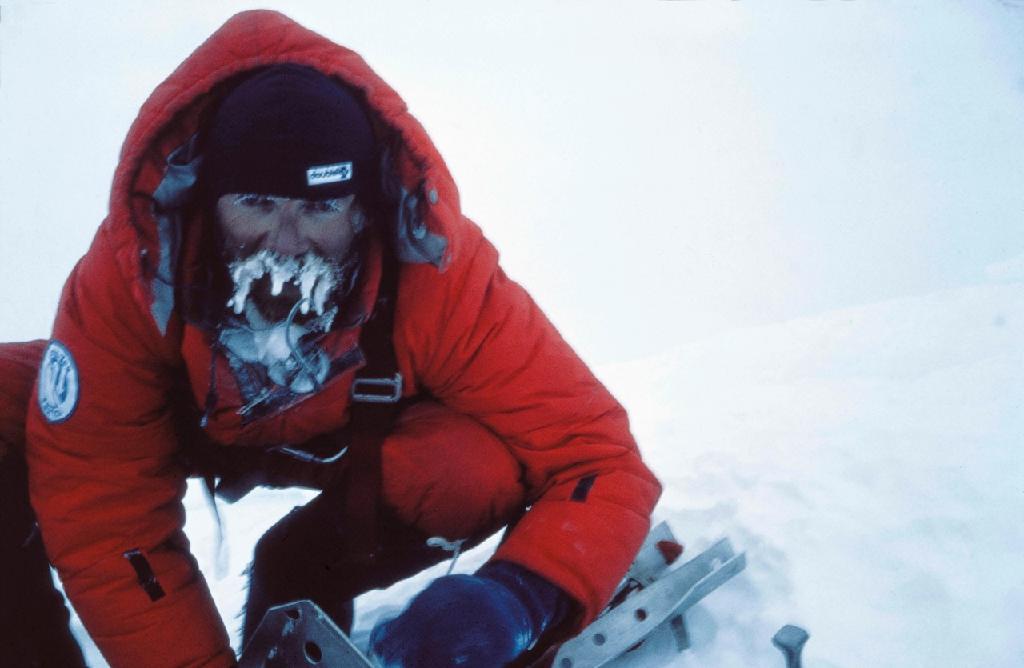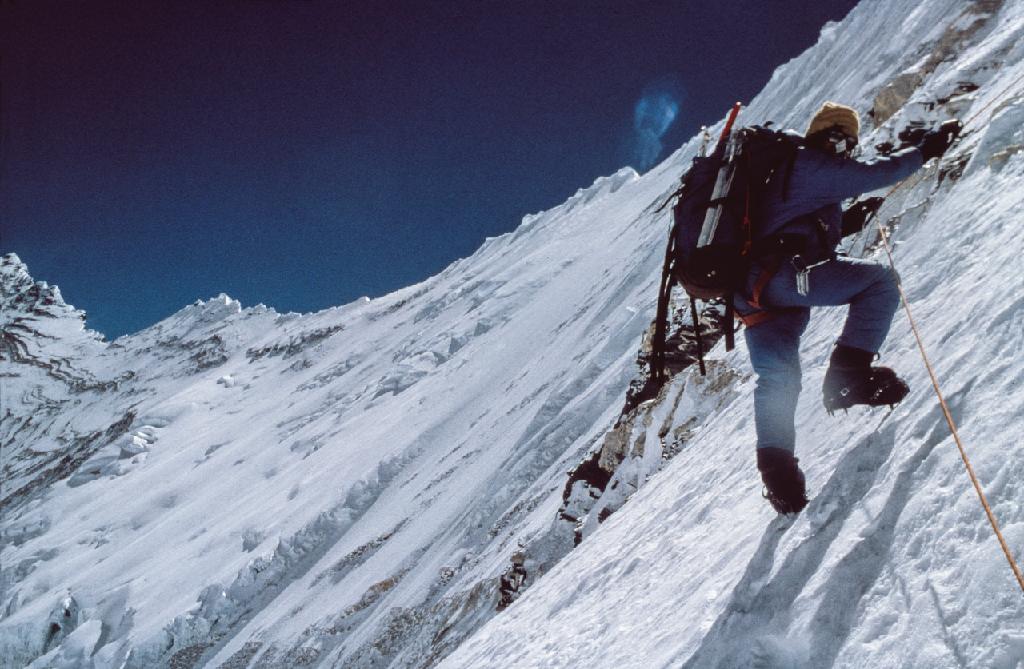Barriers (Part 6)
Posted by Jeremy Windsor on Mar 3, 2023
Brian Hall's new book, "High Risk - Climbing To Extinction" has recently won the prestigious 2022 Boardman Tasker Award for Mountain Literature. In it, Brian sets out to describe the lives of his friends, many of whom have died in the mountains. In recent weeks we've been looking at the barriers that sometimes face those who want to head into the mountains. Often there are physical impediments, but sometimes there are psychological factors too. I caught up with Brian and asked him to tell us about three people who's relationship with the outdoors changed significantly through their lives...
Thanks Brian for talking to me. Can we start by talking about Simon Cochrane? He was one of your oldest school friends and an early climbing partner. You speak movingly in Niall Grimes' Jam Crack podcast about the terrible car accident you were both involved in, together with the injuries suffered and the long term impact it had upon you both. Can you tell us about the impact it had upon Simon and how it change his life and perhaps, his relationship with the outdoors?
Sam (Simon Cochrane) and I were like twins with a very similar outlook on life. At secondary school we both took part in team sports but our real passion from the age of 16 was wandering the Lake District fells and then climbing. Our first roped climb was Harter Fell Gully in winter and it was not until the following summer that we climbed our first rock climb, the Wrinkle in Llanberis Pass. Soon climbing was our passion and especially notable was an adventurous week in the Black Cuillins of Skye when we were seventeen. We were both carefree adolescents. Sam was the joker and academically minded whereas I was more practical and serious. We continued as close friends, both going to Leeds University. However during a visit Cornwall to climb on Bosigran we were involved in a car accident and Sam was badly injured.

"As boys, we had lived parallel lives. In youth, our climbing abilities were average, as was our appetite for adeventure and risk. Over the next dozen years, I became a high-level mountaineer able to face elevated levels of apparent danger, and Sam appeared to be a contented and happy family man ... I often wondered what would have happened if I, not he, had got into the front seat of that car in Cornwall"
As a result of that accident our lives separated. Sam became cautious and withdrawn and combined with his injuries he had to take a year out of University. He never climbed again, through time his health improved and his humour returned as well as some of his adventurous spirit, undertaking arduous journeys through Iceland and Morocco on foot. After university Sam got a steady job with the Coal Board, married and fathered two daughters.
I carried on climbing and after University became a full time mountaineer. With few possessions, I travelled the world for the next fifteen years. The European Alps, the Andes and the Himalayas. Sam's and my life went in different directions. It was only when I was writing my book that I realised Sam had probably suffered from Post Traumatic Stress Disorder (PTSD) as a result of the car accident. A condition that was not fully defined by medical science until 1980. It is fascinating how a chance accident can change the course of life so dramatically.
The second person I'd like to ask you about is John Syrett. In 1974, he suffered a serious injury to his hand. You wrote, "He had lost his magic touch and moved from world class to being just one of many good climbers around at the time". What was the wider impact on him at the time?
John Syrett was a perfectionist and a loner, with a sensitive disposition. When he started climbing on the indoor wall at Leeds University he rapidly improved to become one of the best rock climbers of the day. He had a rare talent, being gymnastically flexible and with a mental strength to attempt difficult climbs. His brilliance shone on gritstone where he made many notable ascents in the early 1970's.

John Syrett in action. A comprehensive account of his life can be found here
Unfortunately, at a drunken party John cut his hand seriously, damaging his finger tendons. After that John never regained his high level climbing ability. He was still a strong climber but not at the elite level he once attained. Just as outdoor activities such as rock climbing often promote positive mental health, the opposite of loosing a special ability can have a negative effect. It became apparent that climbing had become a crutch for John, a central activity which supported his mental health.
Loosing his ability to climb at a high level, John's disposition became more eccentric and his mental health deteriorated. He started work on the North Sea oil rigs and sadly another accident occured and a work mate was killed. John blamed himself though his colleagues absolved him of responsibility. Guilt ridden, John started drinking heavily and a year later he took his own life.
Finally, can I ask you about your own experience. Early in the book you describe two incidents - one, where you're rendered unconscious by falling ice on Changabang and almost a decade later on Mt Blanc Du Tacuil one of your guiding group tripped and caused you all to fall hundreds of metres. Could you talk a little about the incidents and the impact they had upon you?
I had two significant accidents in the mountains. The first one just below the summit of Chamlang ( 7290m) in 1984 when I was knocked unconscious by a falling block of ice. I regained consciousness but my injury resulted in my climbing partners lowering me for three days back to safety. The second was in 1994 occurred when I was guiding three clients on Mont Blanc du Tacul in the French Alps. On the descent the three clients fell on icy ground and my safety belay pulled out. We fell several hundred metres down the slope. My clients were uninjured but I was catapulted over the bergschrund and injured my back.

"One day at an important meeting with the managing director [of Berghaus], I started to feel unwell. I became hot and sweaty, dizzy, and started gasping for breath. I made excuses and went to sit in the toilet with my head in my hands. My doctor reassured me that nothing was physically wrong and gave me exercises to help stop the panic attacks, but they arrived without warning, and the condition remained a curse over the next few years"
Although I was injured during the accidents, within a few months I had recovered physically. However mentally the trauma lasted much longer. In many ways the accident on Chamlang was the most severe as I was never again comfortable climbing in the Greater Ranges. Looking back I am sure I suffer from PTSD. I had recurring dreams of the accident and rescue, sleepless nights and did not acclimatise properly. It destroyed the enjoyment I previously had of climbing at high altitudes. Though I was still happy alpine and rock climbing.
I never sought medical help for my mental anxiety but looking back I would certainly recommend anyone going through similar trauma to do so. From what I know now, support would have helped immensely. I would have realised that what I had was a natural reaction to an accident and my mind had to heal just as much as my body.
Thanks Brian!
Brian's brilliant new book "High Risk..." is highly recommended and is an essential read for anyone with an interest in mountain medicine! Read David Hillebrandt's review of it here.
The first of the "Barriers..." posts can be found here.
Barriers (Part 7) can be found here.
Thanks for reading this post. If this is your thing why don't you take a look at other posts on the blog? Better still, why not join the British Mountain Medicine Society? More information can be found here
For more information about the University of Central Lancashire's Diploma in Mountain Medicine (DiMM) take a look at this.
Comments
Leave a comment.
Leave a comment.



 )
)